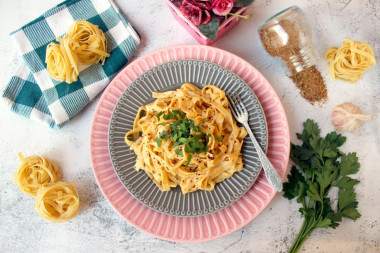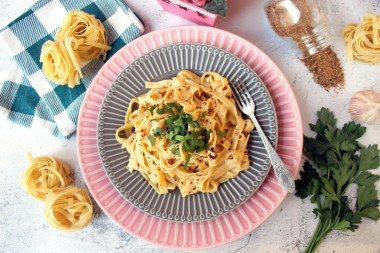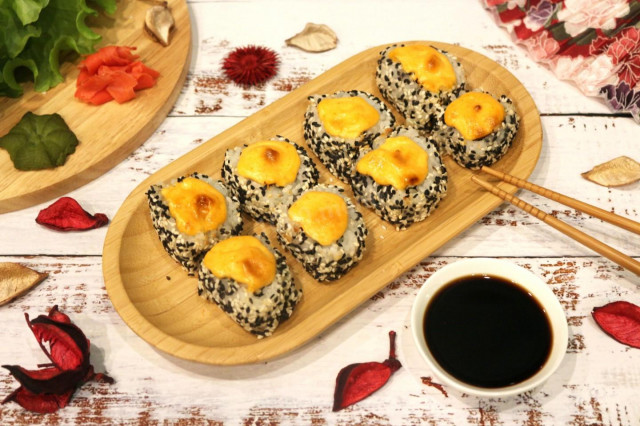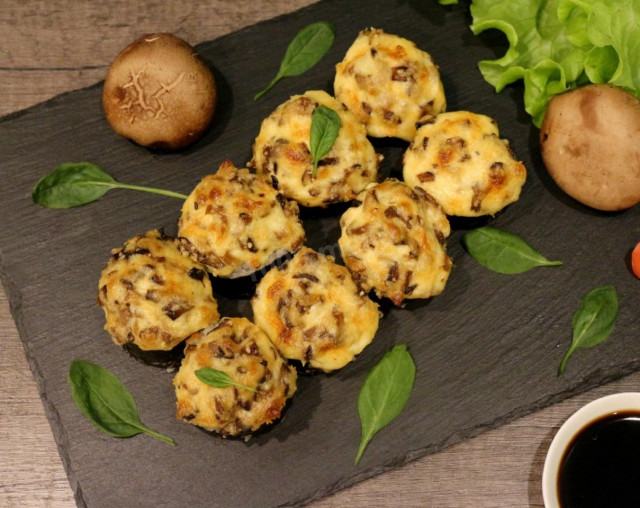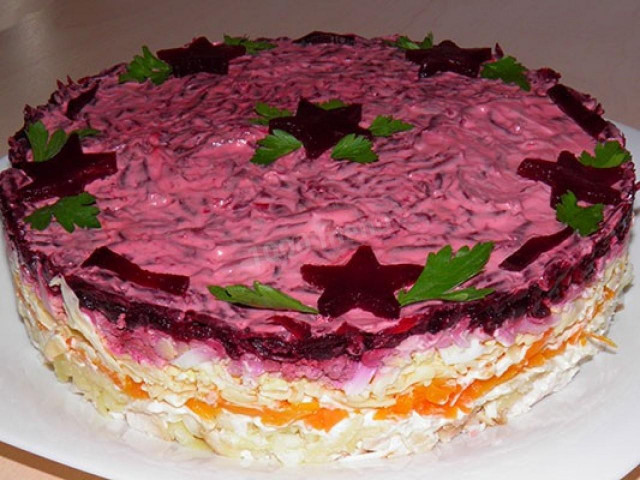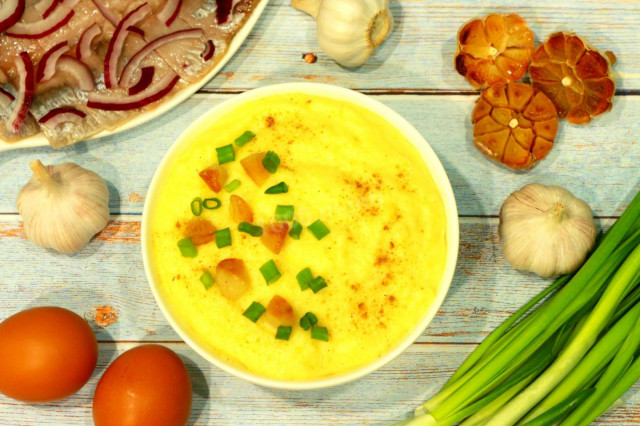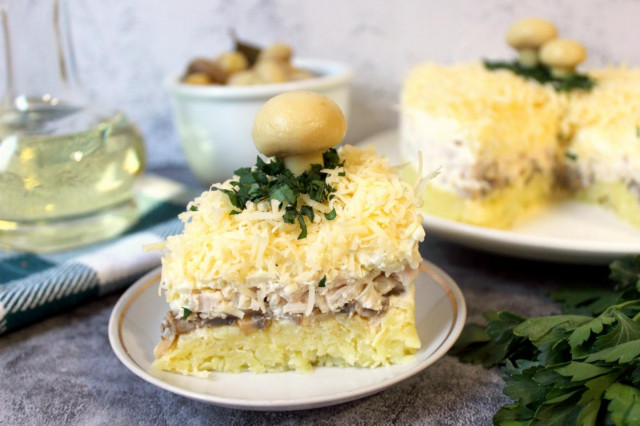Composition / ingredients
Step-by-step cooking
Step 1:
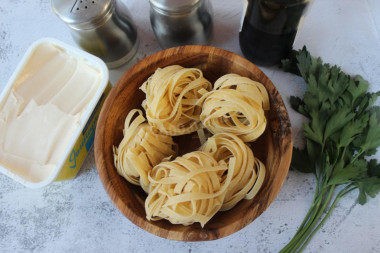
Prepare all the ingredients. You can choose any pasta for this dish: shells, farfalle, fusilli, penne, rigatoni, linguini, tagliatelle, fettuccini and other varieties of pasta. It is also better to use durum wheat pasta for this dish. Processed cheese is better to buy in a tub, not in a briquette. In the bath, the cheese is more delicate in taste and soft in texture than in briquettes, and it is easier to work with it.
Step 2:
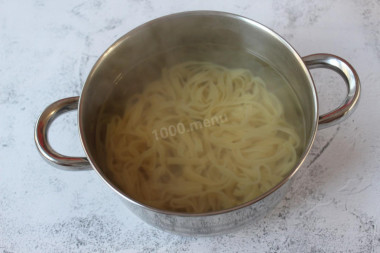
Pour water into a saucepan and put it on the fire. Please note that the pasta should be cooked in a large amount of water, so take the appropriate pan. When the water boils, pour the pasta into it and cook the pasta, without closing the pan with a lid, until al dente. It is not necessary to add salt to the water, since, perhaps, soy sauce and melted cheese will be quite enough.
Step 3:
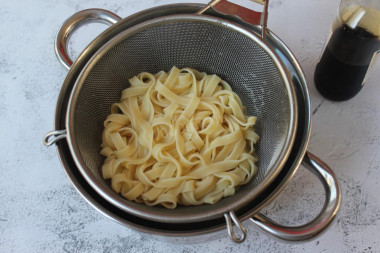
Throw the finished pasta into a colander and let the excess liquid drain, return the pasta back to the pan and pour in the soy sauce, mix.
Step 4:
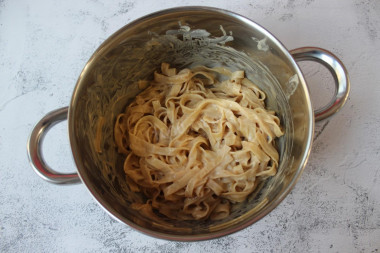
Immediately add the melted cheese from the tub and mix the pasta thoroughly with quick movements so that all the pasta is covered with cream sauce. Since the pasta is very hot, the melted cheese will melt quickly and spread very well over all the pasta. Taste the pasta, salt it if necessary and mix again.
Step 5:
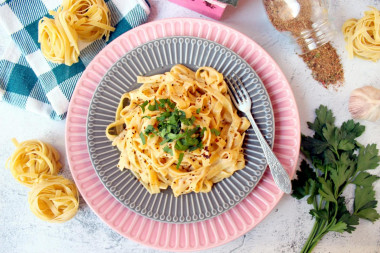
Put the hot creamy pasta on plates, sprinkle with freshly ground black pepper or your favorite spices, garnish with a green salad and serve immediately on the table while the pasta is still hot.
If you still decide to use processed cheese in briquettes when preparing a dish, then I advise you to first put it in the freezer for a while, then grate it and send it to hot pasta. Otherwise, it will be very difficult to mix processed cheese with pasta. And having crushed the cheese in this way, you will mix all the ingredients perfectly.
If desired, brisket, shrimp, fried champignons, pieces of chicken fillet or salmon can be added to such a paste for more taste and variety.
When adding soy sauce to a dish, it is worth considering that it has a rather salty taste. Reduce the total amount of salt, otherwise you risk over-salting.
Caloric content of the products possible in the composition of the dish
- Pasta, premium grade, fortified - 337 kcal/100g
- Pasta, premium, dairy - 309 kcal/100g
- Pasta, premium grade, egg - 342 kcal/100g
- Pasta made from flour of the 1st grade - 333 kcal/100g
- Pasta made of flour in / with - 338 kcal/100g
- Boiled pasta - 135 kcal/100g
- Pasta - 338 kcal/100g
- Processed cheese with 60% fat content - 354 kcal/100g
- Processed cheese with 45% fat content - 294 kcal/100g
- Cheese "megle" - 590 kcal/100g
- Tartar cheese - 348 kcal/100g
- Cheese "cheese "shavru" (goat) - 173 kcal/100g
- Viola cheese - 307 kcal/100g
- Soy sauce - 51 kcal/100g
- Salt - 0 kcal/100g
- Fresh frozen soup greens in a package - 41 kcal/100g
- Greenery - 41 kcal/100g
- Pepper - 26 kcal/100g


